|
|
| Participants |
| From A to C |
|
ABI AKI Maya |
University of Qatar, Doha - Qatar |
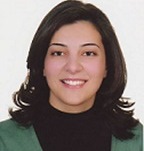 |
|
I
am a Physics Lab Coordinator at Texas A&M University at Qatar (TAMUQ). I
completed her MSc studies in Physics at the American University of
Beirut where I worked as a research assistant in the field of Materials
Science; I focused mainly on the growth and characterization of oxide
thin films. I joined TAMUQ in 2009 upon my graduation and I am currently
a member of the research group of Dr. Othmane Bouhali, director of
research computing at TAMUQ. The group is participating in the CMS
experiment at the LHC. I am involved in the study of the Gas Electron
Multiplier (GEM), a detector proposed as a solution for the future
upgrade of the CMS endcap muon detection system. My work involves data
analysis of test beam data taken at CERN as well as electric field and
avalanche simulation. |
|
| |
|
AGTZIDIS Ioannis |
CERN, Geneva - Switzerland |
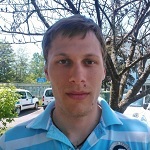 |
|
I am currently a student at the department of Electrical and Computer
Engineering at the Aristotle University of Thessaloniki. During my
university studies I gained a wide spectrum of knowledge which varies
from electrical circuits and mathematics to computer programming and
electronics. As a perfect complement to my studies, I am currently doing
a one year internship at CERN IT Department which gives me valuable
working experience of the best quality, on the subject that I am most
interested in. Finally CSC is ideal place to meet people of same
interests, improve my technical skills and enjoy a beautiful island. |
|
| |
|
AKISHINA Valentina |
Goethe University of Frankfurt am Main -
Germany |
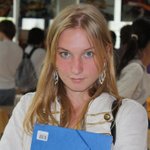 |
|
Currently I am doing my PhD in particle physics. I am involved into the
development of fast and highly parallelized tracking algorithms for the
CBM experiment at FAIR: fast track finding, fast track fitting. In my
programs I use vectorization (based on SIMD instructions set) and
parallelization between cores of CPU and GPU (Open Multi-Processing). |
|
| |
|
AMERI Parinaz |
Karlsruhe Institut für Technologie (KIT) - Germany |
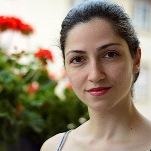 |
|
I am a PhD student working on the improvement of data life cycles for
scientific Big Data, corresponding to community specific and generic
patterns. The high energy physics community has a lot of experience with
the analysis and management of large scale data. Its methods are also
applicable for many other scientific communities. In my PhD, I try to
adopt some of these methods for the usage in other scientific
communities, working together with colleagues from CERN and the German
Tier-1 center GridKa. I did my Bachelor studies in physics and I have
written my master thesis in IT on a topic related to cloud computing. I
am able to program Java, C++ and scripting languages like Python. I have
experience in the Linux and network administration, databases, and
cluster/cloud computing. I would appreciate the opportunity to
participate in your school. The topics fit very well the challenges of
my current work. |
|
| |
|
ANTOSIK Marta |
CERN, Geneva -
Switzerland |
 |
|
Currently, I am a technical student in the Information Technology (IT)
department, Communication Systems (CS) group at CERN. My job is related
to network monitoring systems and maintenance of the network
infrastructure. In parallel, I study at the Warsaw University of
Technology specializing in Telecommunications. The main objective of my
Bachelor thesis was a research on routing protocols in Delay and
Disruption Tolerant Network (DTN) in urban areas during emergency and
rescue scenarios. During my studies, I worked as an intern in several
places including Accenture, France Telecom Group or the Nanyang
Technological University, Singapore where I took part in the Summer
Research Internship (SRI) Programme in 2012. In the latter, I was
involved in a project concerning a fusion a pair of images in the JPEG
domain using the High Dynamic Range (HDR) method. Recently, I use mostly
C/C++ and Perl programming languages. |
|
| |
|
ATTIKIS Alexandros |
University of Cyprus,
Nicosia - Cyprus |
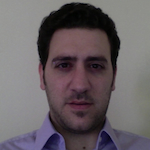 |
|
I am from Cyprus and have recently defended my PhD in Physics, with
title "Search for light charged Higgs bosons with the H+ -> tau+ nu
decay in the fully hadronic final state". The search was based on 2.3
fb-1 of data, recorded in early 2011 with the CMS detector and at a
centre-of-mass-energy of 7 TeV. I am currently in the process of
applying for a post-doctoral position, while in parallel contributing
towards the update of the search for a light/heavy charged Higgs with
all available data. For conducting my research I utilise heavily the C++
and python languages, with Scientific Linux my main operating system.
Nevertheless, I am also familiar with most versions of Linux, Mac OS X
and Microsoft Windows. The main plotting tool I employ for all data
analysis related activities is ROOT, in combination with bash scripting
and grid computing. |
|
| |
|
BAGIACCHI Paolo |
Istituto Nazionale di Fisica Nucleare, Roma - Italy |
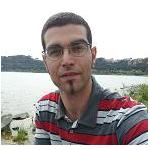 |
|
I studied physics at University of Rome "La Sapienza" obtaining the
degree in 2010. Currently I am a INFN fellowship and an ATLAS
collaboration member and author. During my degree thesis I developed a
tool for the calibration of the RPC chambers in ATLAS and a off line
data monitoring. I am familiar with Unix and Windows systems. I use to
program with python, C++ and VHDL. For my analysis I use ROOT/PyROOT but
also, rarely, pAthena and pRun. I am working in the ATLAS Level1 muon
trigger, where I am maintaining and developing new tool for the
configuration and the offline monitoring of the RPC chambers
calibration. Also I am involved in MCS (micro capillaries scintilating)
group, where we are developing a FPGA based readout system to read the
data that are coming out from a photodiode array (to make a beam
monitoring) and from SiPM (to make a single particle tracking). |
|
| |
|
BECHE Alexandre |
CERN, Geneva -
Switzerland |
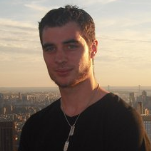 |
|
I
am currently working at CERN as a fellow in the IT-SDC-MI group (Support
for Distributed Computing - Monitoring Infrastructure). My work is
oriented around a monitoring framework called dashboard and I am
specialized in the Data Transfers monitoring. The work covers a wide
range of computer science aspects such as development, system
administration, database, and much more. Previously, I started at CERN
as an openlab summer student in 2010 in the Database group and came back
the following year as a technical student in the Grid technology team,
working on the Disk Pool Manager, a storage solution widely used by WLCG
sites. Both internships were part of my studies in SUPINFO International
University where I obtained my Masters’ degree in Computer Science in
2012. In addition to my work, since 2011 I have been an official CERN
guide. Outside of the workplace I am an active participant in many
sports such as swimming, biking and skiing. |
|
| |
|
BEERMANN Thomas |
CERN, Geneva -
Switzerland |
 |
|
I am a PhD student in computer science from the Bergische Universität
Wuppertal and work at CERN for the ATLAS experiment in the group that
develops and maintains the ATLAS distributed data management system
(DDM). DDM currently manages 140PB of ATLAS data, distributed over 130
sites and accessed by 1000 users. For my PhD studies I am working on
ways to optimise the data distribution using machine learning from the
historical popularity of data and then making predictions about the most
likely future access patterns. I am working on Mac OS and Linux machines
and use Python as a programming language. I have acquired a good
knowledge of Oracle SQL, Apache Hadoop and Pig, which I use to analyse
our data. Other languages I am familiar with are C/C++, Java and
Javascript. |
|
| |
|
BRYNGEMARK Lene |
University of Lund - Sweden |
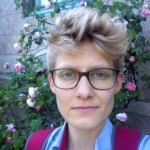 |
|
I am doing my second year of Ph.D. at Lund University, within ATLAS. My
thesis will focus on beyond Standard Model physics searches with jets.
This requires thorough knowledge of the jet reconstruction. I have
evaluated an event-by-event correction of jets for pile-up (detector
signals originating from additional proton collisions in the same and
adjacent bunch crossings, overlaid with signal from the triggering
collision). My work resulted in a new standard ATLAS jet pile-up
correction. To further deepen my understanding of our jet measurements I
am also involved in detector operation within the Liquid Argon
calorimeter team. |
|
| |
|
BUKHARI Syed Ali Zahir |
COMSATS Institute of Information Technology, Islamabad
- Pakistan |
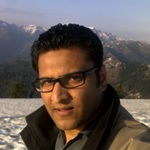 |
|
I graduated from FAST-NU Islamabad, Pakistan in 2008 in
telecommunication engineering and currently in the last semester of my
masters in Information security from CASE Islamabad. Currently am
working as a researcher in CS department at COMSATS Islamabad. I am the
site administrator of the PK-CIIT which is the Alice Tier-2 site at
COMSATS Islamabad. My major responsibilities are the cluster management
and administration, middleware (Glite 3.2, EMI1 and EMI2) configuration
and maintenance. My research interest focuses on networks, security and
clusters. I am familiar with all flavors of Linux and currently working
on scientific Linux for CERN 5, comfortable with C++, Java (netbeans),
Matlab, Shell scripting. I am also a beginner level penetration tester.
I hope CSC2013 will increase my knowledge of the grid and other
technologies, which I will use to enhance the infrastructure of my site
in future. |
|
| |
|
CABERLETTI Marco |
INFN-CNAF, Bologna - Italy |
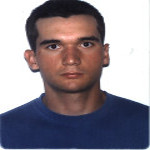 |
|
I graduated in Computer Science in 2012. Now I am working at INFN-CNAF
on OpenStack cloud middleware for provide an IaaS cloud infrastructure
to CNAF's users. In particular, my task is the setup of network
configuration of the infrastructure. Moreover, I install, configure and
manage the cluster of servers for R&D department. I know very well
GNU/Linux, especially Red Hat-based and Debian-based distribution. I am
very interested in the management of network, system services and in
virtualization technology. About programming languages, I am familiar
with C, Python, Java and Bash. I also know HTML, PHP, CSS and SQL
language. |
|
| |
|
CALVET Ivan |
CERN, Geneva -
Switzerland |
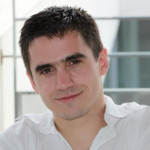 |
|
I am a software engineer working at CERN as a fellow. I come from
Montpellier and studied computer engineering in Marseille. Currently, I
am working on two different tasks for a European project called CRISP.
The first one is a client tool called Ginfo and developed in Python. It
uses Ldap requests to retrieve data in the Glue 2.0 BDII. The second
project I am working on is called Dmlite. It is a C++ library made for
managing DPM (Disk Pool Manager). Before that, I worked on dq2 for Atlas
when I was summer student and then technical student. I learnt C, C++,
Java, php but my favourite language is Python. I like to practice
rock-climbing and snowboarding too. |
|
| |
|
CERVENKOV Daniel
|
Charles University,
Prague - Czech Republic |
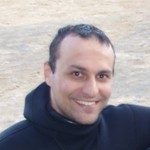 |
|
I am a first year particle physics PhD student working on the Belle &
Belle II experiments at the KEKB accelerator in Japan. My task at Belle
is a time-dependent angular CP violation analysis of a specific decay of
neutral B mesons. At Belle II I contribute to the analysis software used
to test the upcoming Belle II pixel detectors (DEPFET technology). Both
projects utilize C++ with extensive use of the ROOT framework libraries,
Python and Bash/csh. I have reasonable experience with Mathematica,
which I use to speed up some of the more tedious analytical
calculations, and Linux OS administration, as it has been my OS of
choice for ~7 years. |
|
| |
|
CHANG Wei-Jen |
Academia Sinica Grid
and Cloud, Taipei - Taiwan |
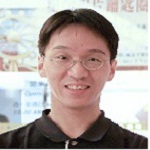 |
|
Currently I am working on our HPC machines' management. (More than 5000
cpu cores and 1PB storage) I also have to do some tests such as file
system or network to evaluate program's performance. Since our computing
nodes install SLC5 for supporting ATLAS, CMS and our own HPC programs, I
am familiar SLC5 OS. I am familiar with Fortran and C/C++ since I wrote
Fortran, C/C++ programs for my thesis. I joined a minor CernVM-FS's
project from last December to this April and I learned a lot form
cooperating with CERN experts. They really gave me different views. |
|
| |
|
CHINZER Lisa Azzurra |
CERN, Geneva -
Switzerland |
 |
|
I received my M.Sc. cum laude in Computer Engineering from the
University of Naples Federico II in 2012. Before that, in 2009 I had
carried out my B.Sc. thesis within a project from Selex ES (Finmeccanica
group), and in 2011 I had worked in the Distributed Data Management
group of the ATLAS experiment at CERN as a summer student. After
graduating, I was selected as ESA Young Graduate Trainee and started
working at ESRIN, namely ESA’s centre for Earth Observation. I have been
a fellow in the Database group of the IT department at CERN since March
2013. My main competencies and interests in computing pivot on
everything that concerns distributed systems and data management. As a
fellow at CERN I am currently involved on operations at the storage
level, especially focusing on innovative solutions for clustered NAS. |
|
| |
|
CHYTKA Ladislav |
Palacký University, Olomouc - Czech Republic |
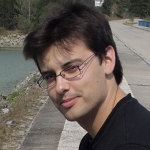 |
|
I am a PhD student at Palacký University in Olomouc and a member of
ATLAS experiment where I am an active member of the ALFA and AFP
detector groups. My main task is currently an implementation of the
model of ATLAS forward region - beam pipe and magnet elements - under
the Athena framework to allow full (Geant4 based) simulation together
with all existing forward detectors. I also help with an implementation
of the AFP model under the Athena and with preparatory simulations of
AFP. |
|
|
CONTRERAS-CAMPANA
Christian |
Rutgers University, Piscataway -
U.S.A. |
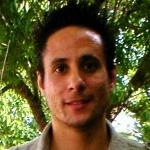 |
|
I am a fifth year PhD student based at CERN working in the High Energy
Particle Physics program at Rutgers University. I joined the
collaboration in the summer of 2010 and began working in analysis of
multi-lepton final states. Primarily, focusing on a search for
pair-production of heavy fourth-generation bottom-like quarks where the
bottom-like quarks go to a b quark and a Higgs Boson. In the analysis
multi-lepton events are categorized into several exclusive search
channels based on jet flavor, lepton multiplicity, particle
identification and various kinematics properties in the events. The
Search channels are ordered by the amount of expected Standard Model
background. Emphasis is put on data-driven estimation of the SM
backgrounds also simulation is used for some backgrounds estimation. We
derived exclusion limits as a function of b’ mass as well as the
branching ratios. Programing languages I work with and familiar with are
C++, ROOT, Python, Java, Shell, Perl, and Java Script. |
|
|


















